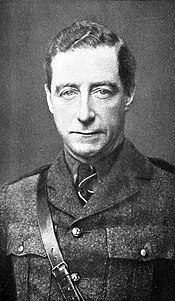Cathal Brugha | |
|---|---|
 | |
| Minister for Defence | |
| In office 1 April 1919 – 9 January 1922 | |
| President | Éamon de Valera |
| Preceded by | Richard Mulcahy |
| Succeeded by | Richard Mulcahy |
| Ceann Comhairle of Dáil Éireann | |
| In office 21 January 1919 – 22 January 1919 | |
| Deputy | John J. O'Kelly |
| Preceded by | Office established |
| Succeeded by | Count Plunkett |
| President of Dáil Éireann | |
| In office 21 January 1919 – 1 April 1919 | |
| Preceded by | New office |
| Succeeded by | Éamon de Valera (as President of the Irish Republic) |
| Chief of Staff of the Irish Republican Army | |
| In office 27 October 1917 – 23 March 1918 | |
| Preceded by | New office |
| Succeeded by | Richard Mulcahy |
| Teachta Dála | |
| In office May 1921 – 7 July 1922 | |
| Constituency | Waterford–Tipperary East |
| In office December 1918 – May 1921 | |
| Constituency | Waterford County |
| Personal details | |
| Born | Charles William St John Burgess 18 July 1874 Dublin, Ireland |
| Died | 7 July 1922 (aged 47) Dublin, Ireland |
| Resting place | Glasnevin Cemetery, Glasnevin, Dublin, Ireland |
| Spouse | |
| Children | 6, including Ruairí |
| Education | Belvedere College |
| Military service | |
| Allegiance | |
| Years of service | 1913–1922 |
| Rank | Chief of Staff |
| Battles/wars | |
Cathal Brugha (Irish pronunciation: [ˈkahəlˠ ˈbˠɾˠuː]; born Charles William St John Burgess; 18 July 1874 – 7 July 1922) was an Irish republican politician who served as Minister for Defence from 1919 to 1922, Ceann Comhairle of Dáil Éireann in January 1919, the first president of Dáil Éireann from January 1919 to April 1919 and Chief of Staff of the Irish Republican Army from 1917 to 1918. He served as a Teachta Dála (TD) from 1918 to 1922.[1]
He was active in the Easter Rising, the Irish War of Independence and the Irish Civil War, and was the first Ceann Comhairle (chairperson) of Dáil Éireann as well as the president of Dáil Éireann, the then title of the head of government.
- ^ Quinn, James. "Brugha, Cathal". Dictionary of Irish Biography. Retrieved 22 December 2021.